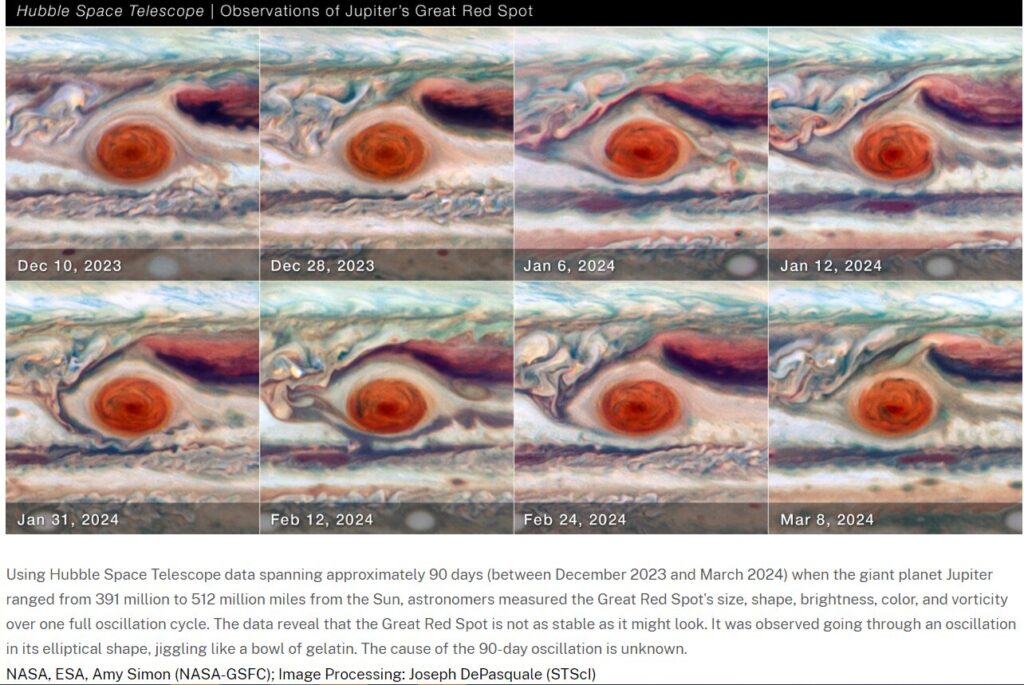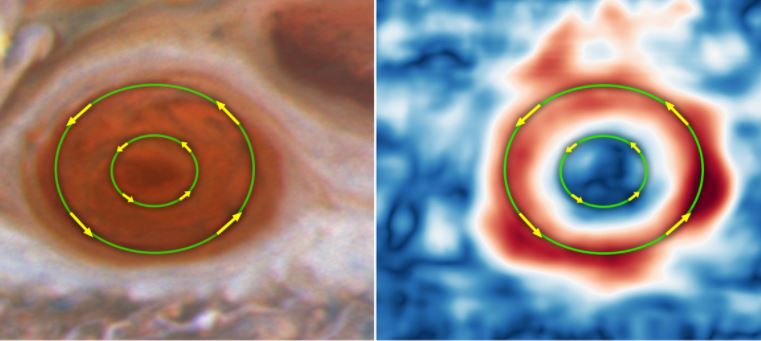
Astronomers have observed Jupiter’s legendary Great Red Spot (GRS), an anticyclone large enough to swallow Earth, for at least 150 years. But there are always new surprises — especially when NASA’s Hubble Space Telescope takes a close-up look at it.
Hubble’s new observations of the famous red storm, collected 90 days between December 2023 to March 2024, reveal that the GRS is not as stable as it might look. The recent data show the GRS jiggling like a bowl of gelatin. The combined Hubble images allowed astronomers to assemble a time-lapse movie of the squiggly behavior of the GRS.
“While we knew its motion varies slightly in its longitude, we didn’t expect to see the size oscillate...
Read More








Recent Comments